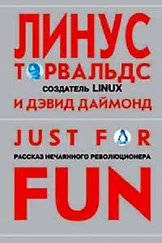At this time, there weren't very many people I knew who were as involved in computers as I was. There was a computer club at school, but I didn't spend much time there. It was basically for kids who wanted to know about computers. There were only about 250 students in my entire high school, and I don't think anybody else had been using one since the age of ten.
One of the big things I liked doing on my Sinclair QL was to make clones of games. I wrote clones of the games from the VIC-20 that I had enjoyed and sometimes I added enhancements. But mostly they were not better: a better machine, not a better concept.
My favorite game was probably Asteroids, but I could never make a good clone of it. The reason was that, at the time, all the arcade Asteroids games were done with real vector graphics.Instead of having graphics based on small dots -- pixels -- they had graphics that were actually done the way a cathode-ray tube (CRT) works, which is to have electrons shot out from an electron cannon from behind the CRT and deflected with magnets. They got much higher-resolution graphics that way, but you couldn't reproduce this very easily.You could make a clone, but it wouldn't look like the original Asteroids game if you wrote it on a computer that didn't have the special graphics capability.
I remember making a Pac Man clone in assembly language. The first step is to kind of remember what the Pac Man characters are supposed to look like. Then you try to draw them on a sixteen-by-sixteen grid of paper, with color. And if you are artistic, you can do a good job. But if you are Mr. Non-Artistic, like I am, it ended up looking like Pac Man's sick cousin.
Okay, so it wasn't a very good clone. But I was really proud of it. The game was actually playable, and I sent it in to one of the magazines that published computer code. I had sold other programs to magazines and thought this would be a natural.
Not.
One of the problems was that the program had been written in assembly language. That meant that if you made the slightest, slightest mistake copying it from the magazine, it wouldn't work.
I wrote some of my own games, too. But it takes a certain mindset to create games. Because games require a lot of performance, you have to get really low down into the hardware of the computer. I could do that, but I didn't have the game play mentality. What makes a great game is not usually how fast it is or how good the graphics are. There has to be something that makes you play it -- something that keeps you with it. It's just like movies. Special effects are one thing, but you also need a plot. And my games never had a plot. A game has to have a progression, an idea. Often, the progression is just that the game gets faster. That's what Pac Man does. Sometimes the maze changes or the monsters get better at following you.
One of the things that interested me about Pac Man was tackling the problem of making graphics that don't flicker. It's a fairly common problem in older computer games, because without special hardware your characters just Bicker. The way you move your characters around is to take away the old copy and write a new copy. If you happen to have bad timing, people can actually see when there's no copy, so it Bickers. You can get around this in multiple ways. You can actually draw the new guy first and then remove the old guy, but you must be careful not to remove that part of the old guy that was occluded by the new guy. Instead of seeing an irritating flicker, you get a good effect-you sometimes see the shadow of the old character on the screen. The brain interprets that in a good way. It doesn't Bicker, but it creates a motion blur. The trouble with this solution is that it is fairly expensive and time-consuming to create.
There's a reason that games are always on the cutting edge, and why they often are the first types of programs that programmers create. Partly it has to do with the fact that some of the smartest programmers out there are fifteen-year-old kids playing around in their rooms. (It's what I thought sixteen years ago, and I still suspect it's true.) But there's another reason games are so pioneering: Games tend to push hardware.
If you look at computers today, they're usually fast enough for anything. But the place you test the limits of the hardware are with action games, like some of the 3-D ones that are now popular. Fundamentally, games are one of the few things on computers where you can tell if things aren't happening in real time. In word processing, you don't mind a delay of a second here or a second there. But in a game, it starts to be noticeable at a sub-tenth of a second. Games used to be fairly simple. These days, programming is actually a fairly small part of any game. There's music, there's the plot. If you compare it to making a movie, the programming component is just the camera work.
So I had the Sinclair QL for three years. It took me from high school to the University of Helsinki to the Finnish Army. It was fine, but we were definitely ready to part ways. In the last year or so I had discovered its shortcomings. The 68008 was a good enough CPU, but I was reading about the next generation 68020, and learning about such virtues as memory management and paging. These new computers could do things that are really important when you are working on low-level stuff.
What irritated me about the Sinclair QL was that while the operating system was capable of multitasking, you could still crash at any time because there was no memory protection. One task that decided to do something bad could just crash the machine.
The Sinclair QL was Sir Clive Sinclair's last foray into designing and making computers. One of the reasons: It wasn't commercially successful. It had interesting technology, but the company had production problems and quality assurance problems and the inevitable bad press. Moreover, the market was beginning to become more competitive.
The late 1980s were the years when you could start to imagine that, yes, maybe someday your average trolley rider would own a computer, if only to perform word processing. And all signs pointed to the PC. Yes, the original IBM PCs had started flooding the shelves and becoming successful despite numerous technical shortcomings. Those ubiquitous beige creatures had the IBM stamp of approval, after all, and that meant a lot. Another attraction: The peripherals were standard and easy to obtain.
I was reading about all these newer CPUs that could do what I wanted. It became clear that the 68020, which looked interesting, wasn't going anywhere. I could have considered buying a CPU upgrade for the QL. In those days that meant basically rebuilding the machine. And the operating system didn't know about memory management, anyway, so I would have had to write my own version. So it was like: Hhhmmm. Doing that will be a big step. And it will be expensive to get a new CPU.
And then there was still the increasing headache of buying things for the computer. It wasn't as if there was a Sears catalogue for the Sinclair QL and you just picked up the phone and ordered more memory. The postal-order-from-England routine was getting old. (I didn't mind that there was no shrink-wrapped software because I was able to write all that myself.)
There was a positive side effect to this pain-in-the-neck. When I was thinking about getting rid of the machine, I decided to sell my peripherals-the real hard drive I had purchased because I couldn't take the microdrive one second longer, and my expansion RAM. But there weren't people lined up in the streets searching for such stuff, so you had to advertise in a computer magazine and pray. And that's how I met my good friend Jouko Vierumaki, who turned out to be probably the only other person in all of Finland who owned a Sinclair QL. He answered my ad and took the train from Lahti and bought some of my peripherals. Then he introduced me to snooker.
Читать дальше












